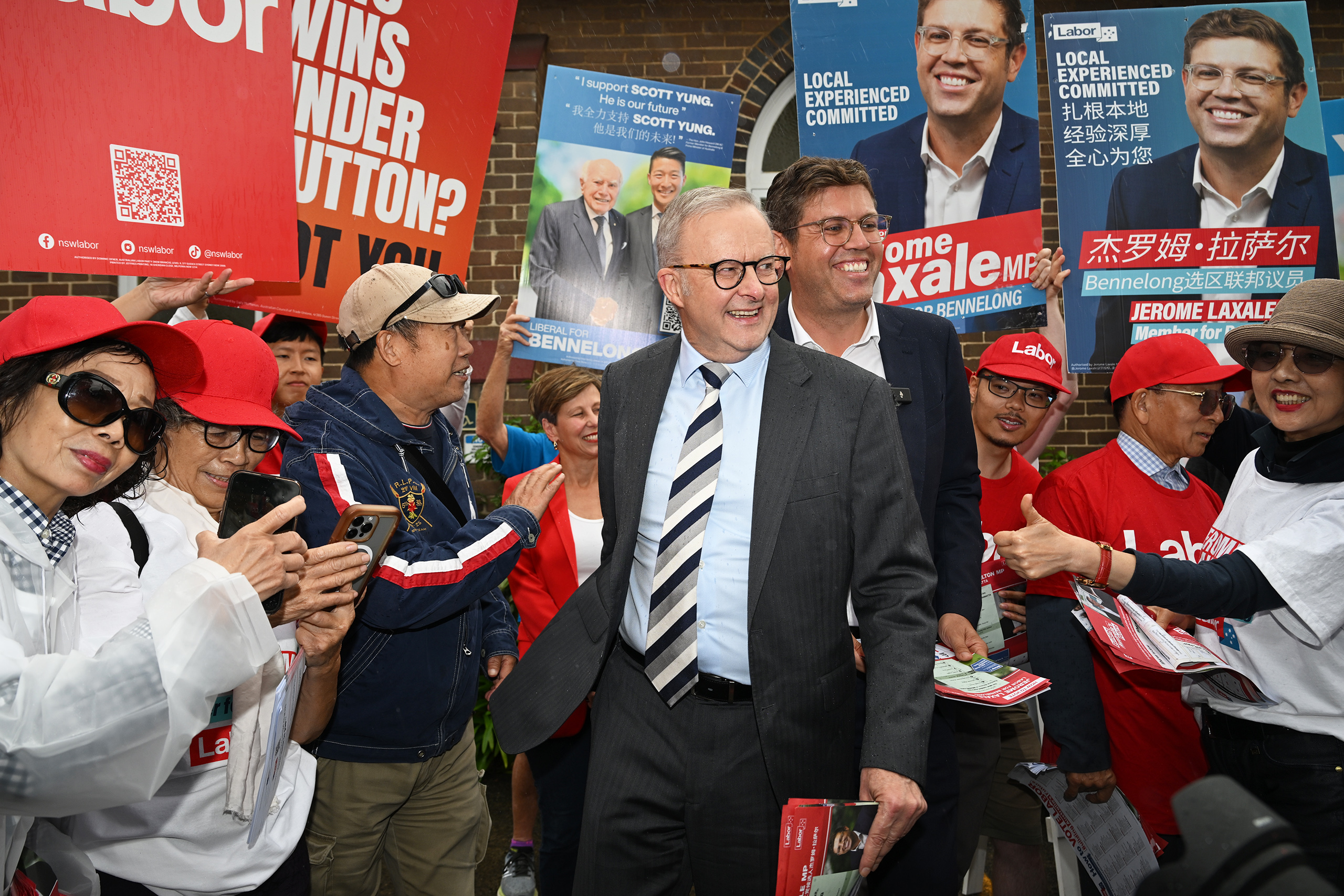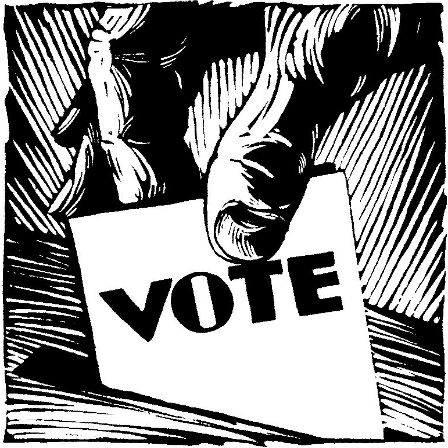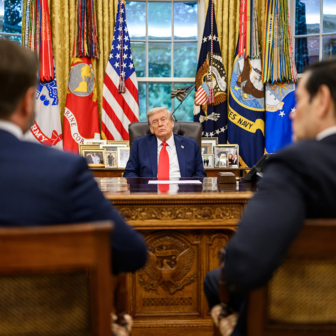The federal Coalition appears miles, light years, away from regaining office. It attracted a record low number of primary and two-party-preferred votes and seats in May. It is seriously split, with an outsized right-wing flank that reflects the Liberal and National party memberships and Sky After Dark acolytes but not much else. And yet it sees salvation in dragging its policy offerings even further to the fringes.
Still, it’s easy to forget that Australian governments tend to change not because the opposition has set voters’ pulses racing but because the incumbent has worn out its welcome and the alternative seems at least endurable. We’re talking about voters who elected Tony Abbott as prime minister in 2013 with a seriously big majority. Yes, Abbott enjoyed a united team, but they were united because he had delivered huge voting-intention leads in the polls throughout the preceding term.
What is on life support is the two-party system. If we include the support for that 1930s breakaway, Lang Labor, in the national figure, Labor’s primary vote of 34.6 per cent in May this year was its fourth-lowest since 1910 — and the three lower ones all came in the last twelve years.
So, one day the electorate will turf this government out, and something will have to take its place.
What does our best-known calculator, the Mackerras electoral pendulum, tell us about the likely prospects? A 5.2 point swing to the Coalition, taking the national vote to a two-party-preferred 50–50, would reduce Labor’s haul by a net fourteen seats. The government would end up with eighty seats and the Coalition fifty-seven. (The redistributions taking place in three states will probably change these numbers a little.)
But the pendulum’s design means it keeps the thirteen-strong crossbench constant. How realistic is that? Not very. Apart from anything else, changes in major-party votes will have flow-on effects in those “other” electorates.
Let’s stay with that uniform 5.2 point swing but assume it all comes from a uniform first-preference swing from Labor to the Coalition in all 150 electorates. All the other candidates’ primary votes stay the same. Would that mean the crossbench doesn’t change? No, the Labor-to-Coalition shift alone would have repercussions for non-major-party candidates.
First of all, the Greens would regain Griffith in Queensland. The 5.2 point Labor drop would mean that, as in 2022, the two-candidate count comes down to the Coalition versus Greens and the latter, thanks to piles of Labor preferences, easily prevails.
In the same way, Labor would lose Richmond in New South Wales, probably to the Greens, but maybe to the National Party. It would depend on how those preferences from Labor voters flowed. But the party would certainly lose.
The Coalition would take Ryan in Queensland from the Greens purely because of its improved primary vote. And the Liberals would snatch Curtin in Western Australia, Kooying in Victoria and Bradfield in New South Wales for the same reason: increased Liberal support.
Labor’s lower vote would see it lose two seats to independents, Bean in the ACT and Fremantle, Western Australia.
We’re getting to something closer to a contest. The tally now is Labor on seventy-six, the Coalition on sixty-one, nine independents, two Greens, and Rebekha Sharkie and Bob Katter (who are both, strictly speaking, minor-party members). But Labor still comfortably forms government with a 50 per cent national two-party-preferred vote.
What if we bump the swing up to 6.2? Four more seats would shift directly, on the pendulum, from Labor to the Coalition. And the Greens would take Victoria’s Wills and Queensland’s Brisbane from Labor. Now Labor is on seventy, the Coalition on sixty-five and Greens on four, with nine independents plus Sharkie and Katter.
The resulting minority government could be of either persuasion. It would depend on the teal independents, and the identity of the Liberal leader would play a big part. (I’m not assuming the teals would behave as a bloc.)
Add another percentage point, and a 7.2 point swing would give the Coalition seventy-one and Labor sixty-four, with the crossbench as described above. That’s a likely Coalition government, with 52 per cent of the two-party-preferred.
Of course, it won’t be the case that only the major party votes swing. Swings are never uniform, and we’re forgetting our old friend, the sophomore surge, among the twenty-five new Labor MPs, which will assist the government on the pendulum. But the main point here is that when a party does well against the other major party it can also expect to improve its performance in some contests against minor parties and independents.
Is a swing of around seven points attainable? Of course it is. Elections are discrete events, each in different circumstances, and electoral gravity tends towards 50–50. Big wins are usually followed by corrections.
If the size of Labor’s win this year was heavily influenced by the craziness in the United States, with opposition leader Peter Dutton realising too late that his Trumpiness was a serious negative, then the 2028 Australian contest will be played out in utterly unknown parameters. Yes, either Donald Trump or J.D. Vance will be American president and their country will be further along its march to authoritarianism. The repercussions for international events, and especially involving China, are unpredictable.
By then Australia might have blotted our copybook with America over matters such as Israel and Palestine.
But either way the Liberal leader, to be competitive, will need quite clearly not be a Trump or a Vance. In short, the circumstances of the 2028 election, domestic and international, are Rumsfeldian unknowns.
In the meantime, I’ll be working on a pendulum-plus computer routine that spits out seat numbers for a given set of polled primary votes, along the lines of those hypotheticals above, but inputting numbers for all parties. The Mackerras pendulum is still useful, but it needs an additional dimension. •





